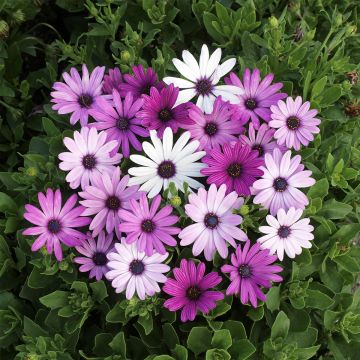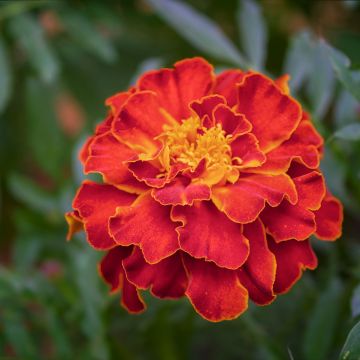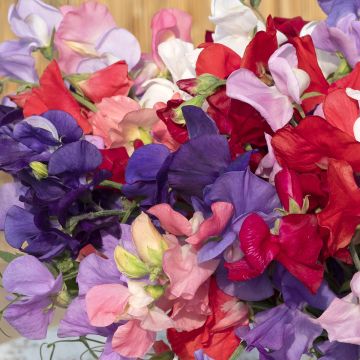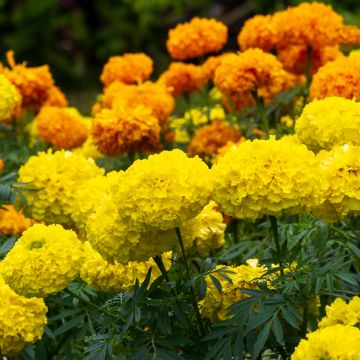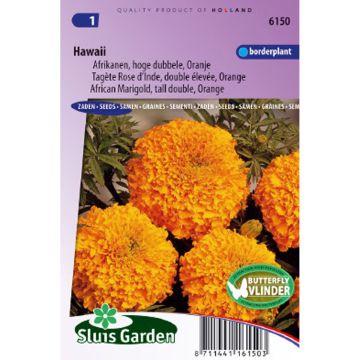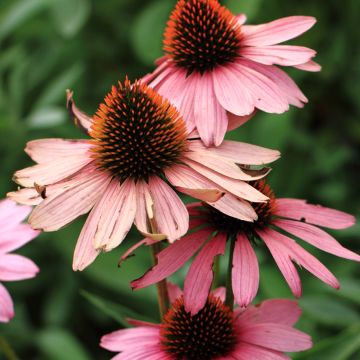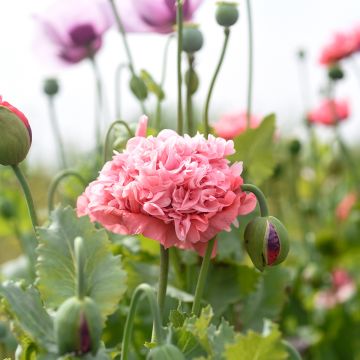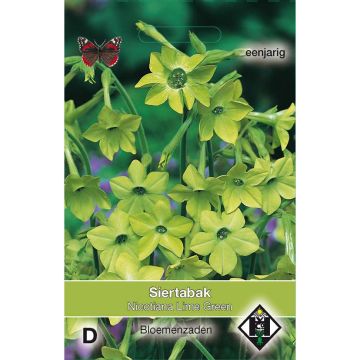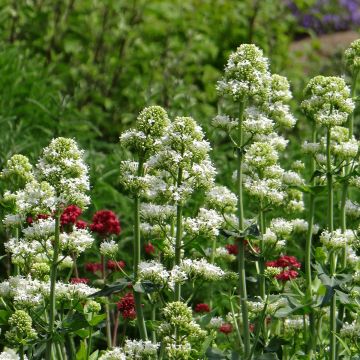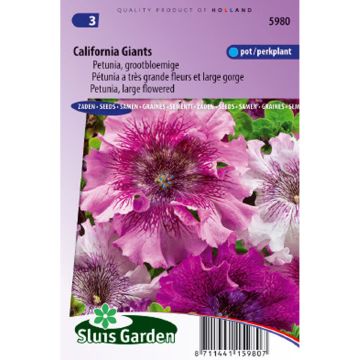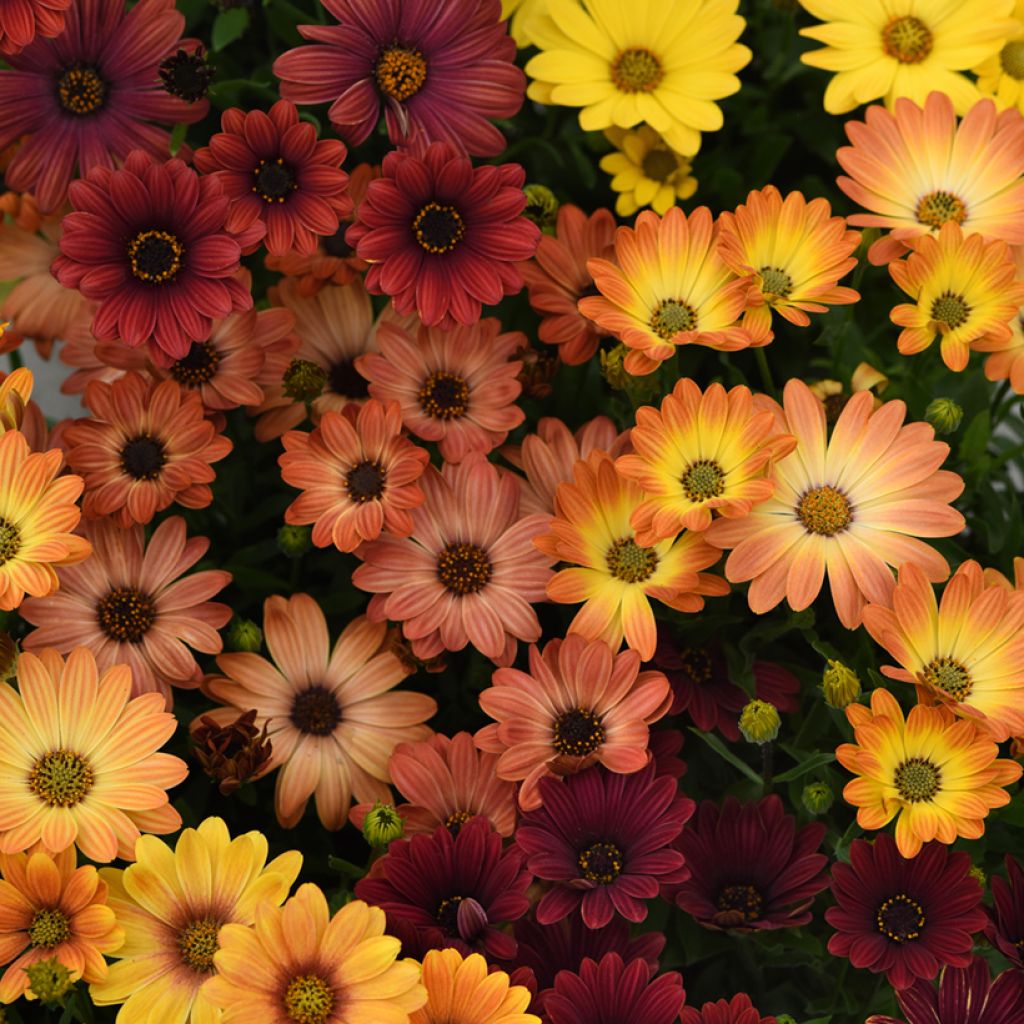

Osteospermum Akila Sunset Shades seeds - Cape Daisy
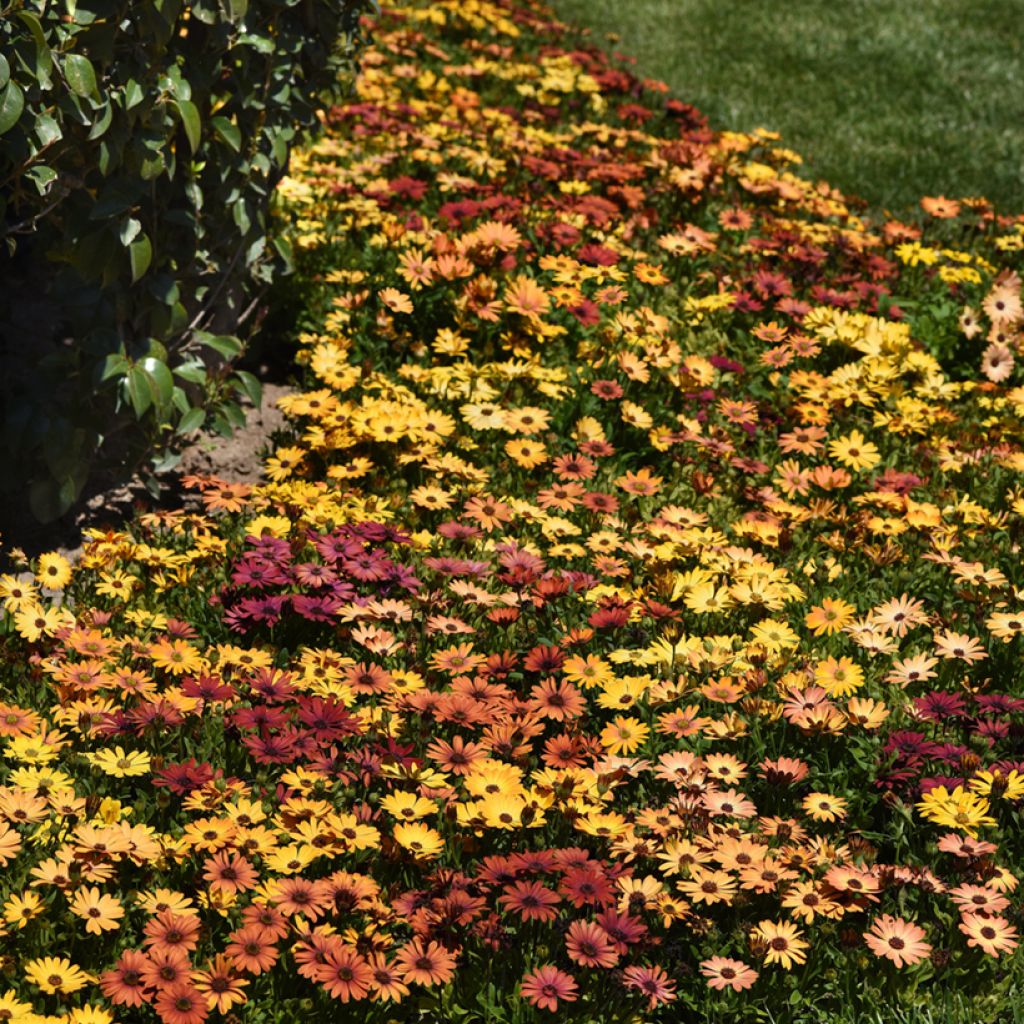

Osteospermum Akila Sunset Shades seeds - Cape Daisy
Osteospermum Akila Sunset Shades seeds - Cape Daisy
Osteospermum x hybrida 'PAS1260426' AKILA SUNSET SHADE ( AKILA series )
African Daisy, Cape Daisy, South African Daisy
This item cannot be shipped to the selected country
Dispatch by letter from €3.90
Delivery to Corse prohibited
More information
Schedule delivery date,
and select date in basket
This plant carries a 6 months recovery warranty
More information
We guarantee the quality of our plants for a full growing cycle, and will replace at our expense any plant that fails to recover under normal climatic and planting conditions.
Seed-only orders are dispatched by sealed envelope. The delivery charge for seed-only orders is €3.90.
Delivery to Corse prohibited: UE law prohibits the import of this plant from mainland France to Corse as part of the fight against Xylella fastidiosa. Please accept our sincere apologies.
More information
Does this plant fit my garden?
Set up your Plantfit profile →
Description
Osteospermum Akila 'Sunset Shades' is a mixed selection of African Daisy developing on a compact, highly branched plant, with lanceolate dark green foliage, displaying the most beautiful range of sunset shades. The flowers bloom in shades of burgundy, pink-red, salmon, apricot, orange, and yellow, around a dark centre. These daisy-like perennials are fairly hardy and tolerate both drought and poor soils well, requiring minimal care.
Osteospermums, also known as Cape Daisies or African Daisies, belong to the aster family. They are perennials grown as annuals in temperate climates. They are not very hardy, susceptible to temperatures below -5°C, especially if frost is repeated. However, with mild winters, especially in coastal areas, they will show off their beautiful dark green foliage throughout the winter. Osteospermums offer an impressive range of colours. The Akila 'Sunset Shades' selection offers a mix of warm colours, in burgundy-red, orange, apricot, salmon, yellow, pink-red. They produce a profusion of solitary, 5 to 6 cm diameter flowers, held at a height of 30 cm, on a highly branched, 50 cm wide clump.
They grow in South African sandy soils, along steep slopes or at the base of cliffs. From their natural habitat, they have retained a preference for well-drained, poor soils and full sun. They are enduring, with a long flowering period from June to October, appreciated by less attentive gardeners. During dry spells, these beautiful, very undemanding daisies will simply thrive with a little water. To stimulate flowering, just remove the faded flowers.
Osteospermums are undemanding plants that thrive in sunny locations and well-drained soils. Mix 'Sunset Shades' with other Osteospermums in warm tones or pink tones that complement them well. Add shrubby Salvias in the background and heathers in the foreground with grey-leaved plants like 'Edward Bowles' cotton lavender. They are so nectar-rich that butterflies never tire of visiting. Appreciated in containers and pots where they are easy to store in winter, they make generous bouquets.
If you water them during a very hot and dry summer, avoid wetting their foliage. You might see powdery mildew appear. With this precaution taken, they are very resistant to diseases.
Report an error about the product description
Osteospermum Akila Sunset Shades seeds - Cape Daisy in pictures


Flowering
Foliage
Plant habit
Botanical data
Osteospermum
x hybrida
'PAS1260426' AKILA SUNSET SHADE ( AKILA series )
Asteraceae
African Daisy, Cape Daisy, South African Daisy
Cultivar or hybrid
Other Osteospermum seeds
Planting and care
Sow the seeds of Osteospermum Akila Sunset Shades in early spring from March to April in good seed compost and lightly tamp them down, keep in the light to aid germination. The substrate should remain moist without excess. You will need to wait between 10 to 15 days to see the young shoots appear at a temperature between 15 and 18°C.
When the seedlings are strong enough to be handled, repot them in larger pots or trays to gradually acclimatise them to outdoor temperatures for about ten days. Once all risk of frost is gone, transplant to a very sunny and well-drained spot, making sure to space them at least 40 cm apart.
Sowing period
Intended location
This item has not been reviewed yet - be the first to leave a review about it.
Flower seeds
Haven't found what you were looking for?
Hardiness is the lowest winter temperature a plant can endure without suffering serious damage or even dying. However, hardiness is affected by location (a sheltered area, such as a patio), protection (winter cover) and soil type (hardiness is improved by well-drained soil).

Photo Sharing Terms & Conditions
In order to encourage gardeners to interact and share their experiences, Promesse de fleurs offers various media enabling content to be uploaded onto its Site - in particular via the ‘Photo sharing’ module.
The User agrees to refrain from:
- Posting any content that is illegal, prejudicial, insulting, racist, inciteful to hatred, revisionist, contrary to public decency, that infringes on privacy or on the privacy rights of third parties, in particular the publicity rights of persons and goods, intellectual property rights, or the right to privacy.
- Submitting content on behalf of a third party;
- Impersonate the identity of a third party and/or publish any personal information about a third party;
In general, the User undertakes to refrain from any unethical behaviour.
All Content (in particular text, comments, files, images, photos, videos, creative works, etc.), which may be subject to property or intellectual property rights, image or other private rights, shall remain the property of the User, subject to the limited rights granted by the terms of the licence granted by Promesse de fleurs as stated below. Users are at liberty to publish or not to publish such Content on the Site, notably via the ‘Photo Sharing’ facility, and accept that this Content shall be made public and freely accessible, notably on the Internet.
Users further acknowledge, undertake to have ,and guarantee that they hold all necessary rights and permissions to publish such material on the Site, in particular with regard to the legislation in force pertaining to any privacy, property, intellectual property, image, or contractual rights, or rights of any other nature. By publishing such Content on the Site, Users acknowledge accepting full liability as publishers of the Content within the meaning of the law, and grant Promesse de fleurs, free of charge, an inclusive, worldwide licence for the said Content for the entire duration of its publication, including all reproduction, representation, up/downloading, displaying, performing, transmission, and storage rights.
Users also grant permission for their name to be linked to the Content and accept that this link may not always be made available.
By engaging in posting material, Users consent to their Content becoming automatically accessible on the Internet, in particular on other sites and/or blogs and/or web pages of the Promesse de fleurs site, including in particular social pages and the Promesse de fleurs catalogue.
Users may secure the removal of entrusted content free of charge by issuing a simple request via our contact form.
The flowering period indicated on our website applies to countries and regions located in USDA zone 8 (France, the United Kingdom, Ireland, the Netherlands, etc.)
It will vary according to where you live:
- In zones 9 to 10 (Italy, Spain, Greece, etc.), flowering will occur about 2 to 4 weeks earlier.
- In zones 6 to 7 (Germany, Poland, Slovenia, and lower mountainous regions), flowering will be delayed by 2 to 3 weeks.
- In zone 5 (Central Europe, Scandinavia), blooming will be delayed by 3 to 5 weeks.
In temperate climates, pruning of spring-flowering shrubs (forsythia, spireas, etc.) should be done just after flowering.
Pruning of summer-flowering shrubs (Indian Lilac, Perovskia, etc.) can be done in winter or spring.
In cold regions as well as with frost-sensitive plants, avoid pruning too early when severe frosts may still occur.
The planting period indicated on our website applies to countries and regions located in USDA zone 8 (France, United Kingdom, Ireland, Netherlands).
It will vary according to where you live:
- In Mediterranean zones (Marseille, Madrid, Milan, etc.), autumn and winter are the best planting periods.
- In continental zones (Strasbourg, Munich, Vienna, etc.), delay planting by 2 to 3 weeks in spring and bring it forward by 2 to 4 weeks in autumn.
- In mountainous regions (the Alps, Pyrenees, Carpathians, etc.), it is best to plant in late spring (May-June) or late summer (August-September).
The harvesting period indicated on our website applies to countries and regions in USDA zone 8 (France, England, Ireland, the Netherlands).
In colder areas (Scandinavia, Poland, Austria...) fruit and vegetable harvests are likely to be delayed by 3-4 weeks.
In warmer areas (Italy, Spain, Greece, etc.), harvesting will probably take place earlier, depending on weather conditions.
The sowing periods indicated on our website apply to countries and regions within USDA Zone 8 (France, UK, Ireland, Netherlands).
In colder areas (Scandinavia, Poland, Austria...), delay any outdoor sowing by 3-4 weeks, or sow under glass.
In warmer climes (Italy, Spain, Greece, etc.), bring outdoor sowing forward by a few weeks.

































